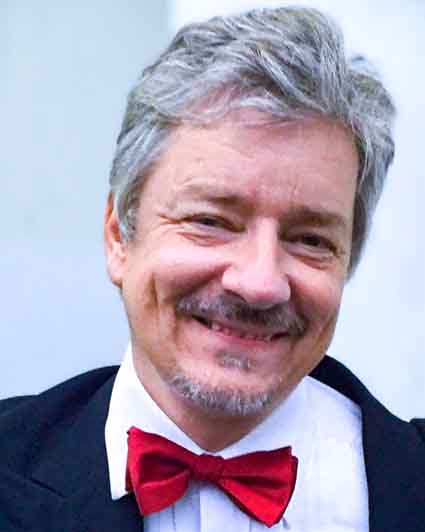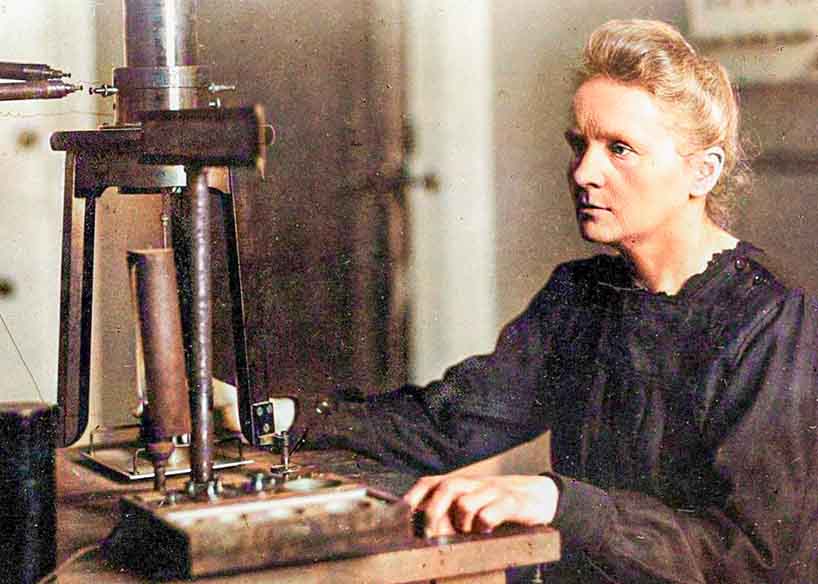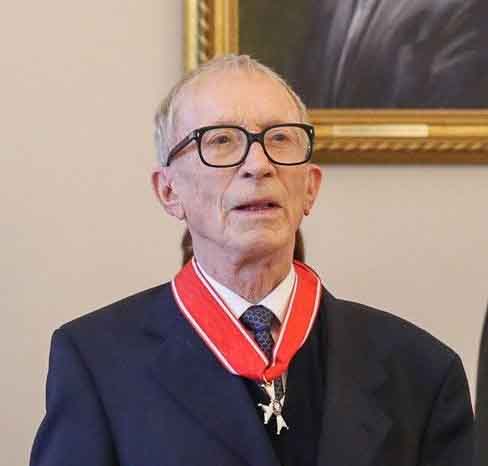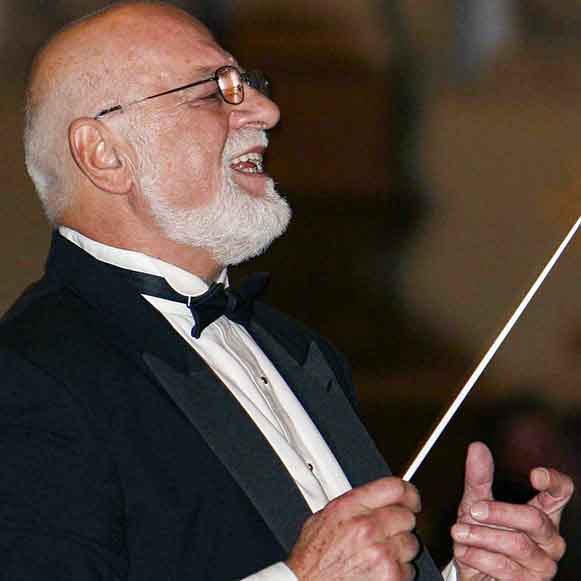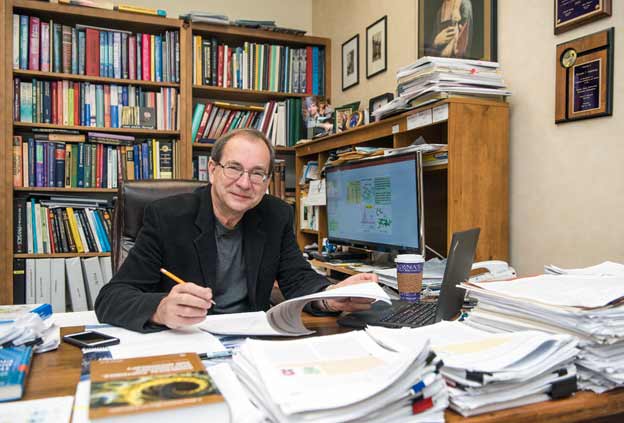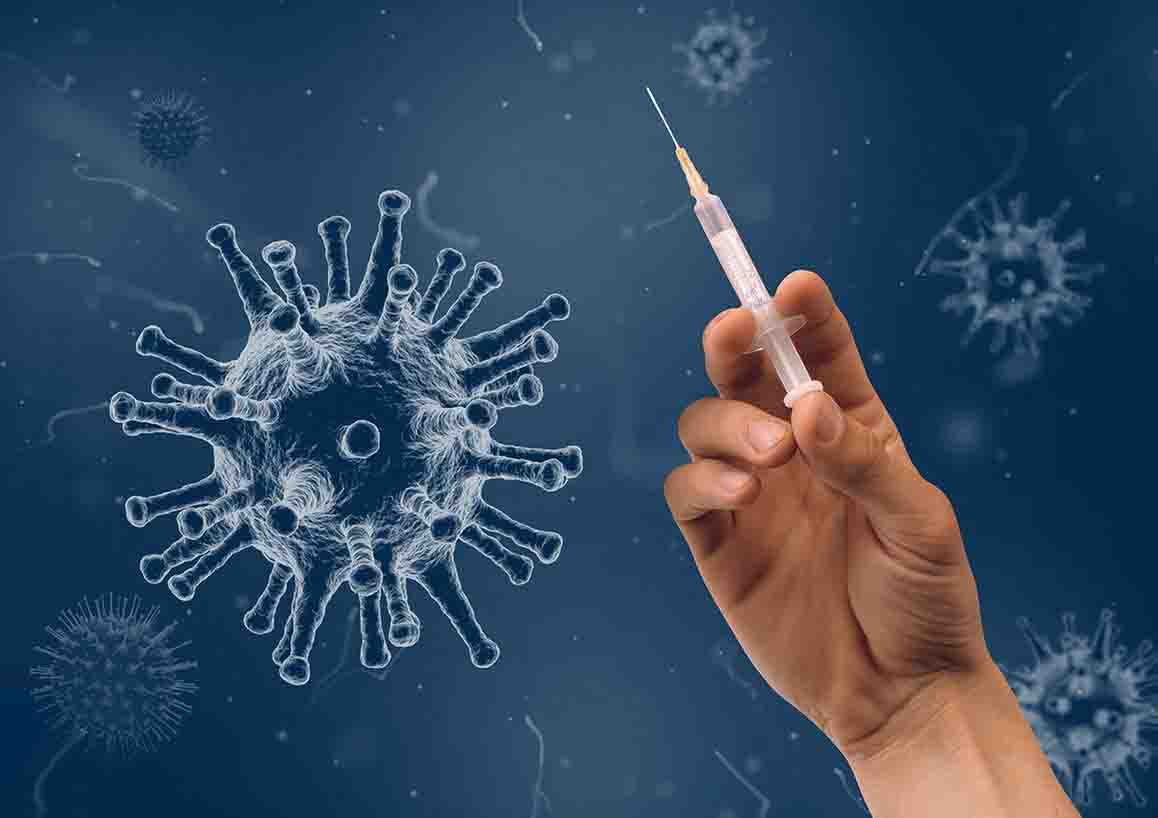Unfortunately, we will not be able to celebrate the hundred-year jubilee of one of the greatest personalities of Polish science. We report with sadness that on Wednesday, December 16, 2020, at the age of 99, professor Wacław Szybalski, an outstanding researcher, a true genius of molecular genetics, called the "king of genetics", repeatedly mentioned as a candidate for the Nobel Prize, honorary doctor of many universities, passed away. In prof. Wacław Szybalski, we say farewell to an excellent specialist in genetics and molecular medicine, and to the father of the so-called synthetic biology. He was a world-class scientist, mentor, educator, model for many Polish researchers, and - at the same time - a great Pole and an active patriot.
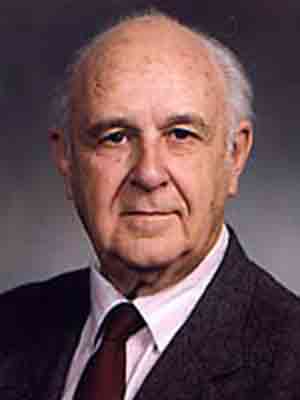
Wacław Szybalski (1921-2020) (Photo: University of Wisconsin-Madison)
He made a number of scientific discoveries that could easily deserve at least one Nobel Prize, and his work laid the foundation for several Nobel Prizes won by others, often his immediate protégés. He has mentored many successful scientists and has worked with some of the biggest names in the field for 60 years.
Dr. James D. Watson, a world-renowned scientist who was awarded the Nobel Prize, along with Francis Crick, for explaining the structure of the DNA molecule, emphasized in an interview that the research of his friend and mentor Dr. Szybalski was groundbreaking and wide-ranging, and that he is widely credited with developing the concept of multi-drug antibiotic therapy, laying the foundations for gene therapy, and establishing the field of synthetic biology.
Professor Szybalski was, after all, the founder of worldwide scientific trends in the fields of molecular genetics, biotechnology, genetic engineering, and molecular biology. He developed many original research methods, and his scientific results in many areas were the firsts in history. Methods for the synthesis and separation of nucleic acids in chloride and cesium sulphate, development of rules for the detection of mutagenicity of chemical compounds on bacteria, causal relationship between mutagenesis and carcinogenesis, research on the human genome, creation of the HAT selection system, popularization of the first antibiotics for the treatment of infection and the multi-antibiotic method, physical methods in DNA genetic research, the lambda genome - these are just some of his achievements.
The Professor's name is widely associated today primarily with the research that allowed for the revolutionary introduction of DNA into human cells, i.e. cell transformation. His work in the field of genetics and molecular biology is nowadays used in research on the functioning of genes and was at the heart of the Human Genome Project.
The War Years
Before he became a world-famous scientist, he made a significant contribution to the fight against the occupiers of Poland: Nazi Germany and Soviet Russia. The Soviets were allied with the Nazis from 1939 to 1941 and occupied about half of Poland. Trains traveled freely through occupied Poland with Soviet supplies necessary for their Nazi allies. On the way back, Poles deemed anti-Soviet often appeared on the trains being transported to Siberia. The earliest acts of armed resistance were attacks on these trains. Szybalski took an active part in the resistance, for example, using his chemical engineering knowledge to produce "homemade" TNT, so that the Polish resistance could sabotage these railroads.
Risking his life, he also took part in smuggling the typhus vaccine to the Jews in the Warsaw ghetto. Typhoid fever is a notoriously dangerous bacterial disease that is transmitted by lice. It can spread among soldiers, refugees and prisoners of concentration camps, a situation that accurately describes wartime Europe. The vaccine against typhus was created in Lviv by an outstanding Polish bacteriologist, Dr. Rudolf Stefan Weigl. As one of the closest associates of Dr. Weigl, Szybalski - like many others - survived the occupation as a lice feeder, and supervisor of other lice feeders - including eminent scientists such as the famous mathematician Stefan Banach - who found refuge from the invaders by offering their own blood for feeding the lice in Weigl's laboratory.
Growing up under two of the 20th century's most sinister empires left a psychological mark, however. “After escaping from Poland, I often woke up with a nightmare: I'm back there, captured, drenched in cold sweat. Under these tyrannies, you never knew what would happen at night or the next day.” Szybalski said.
Referring to those dangerous times, Szybalski recollects: “My secret was luck and the instinct not to be in the wrong place at the wrong time. I was a scout and I learned to survive both in the forest and in the city." The practical knowledge of how to distil home-made vodka (moonshine) - a valuable currency during the war - as well as his great ingenuity and entrepreneurship, also helped greatly in surviving the turmoil of the war.
During the war, he was primarily occupied with studies and laboratory work. “I didn't have time to worry. I knew it was only temporary and I had to prepare for the next part of my life." His inborn optimism was evident, for example, during numerous bombings in 1939-45: “People sat in the basement, the whole house jumped up and down and they prayed. I was [sitting] in some corner with an English-Polish technical dictionary, learning English."
Despite his innate optimism, Szybalski was disappointed with some of the Allied decisions. For example, at great personal risk, he secretly documented and photographed the railroads along which the Germans transported Jews from Lviv to labor and death camps, such as Bełżec, so that American bombers could destroy key railway junctions, but these Allied bombers never arrived. "I made plans, but Mr. Roosevelt didn't like them, so all my efforts were wasted" he said, with a peculiar touch of irony.
His sarcastic sense of humor was typical: "In a very neat pact, Hitler and Stalin divided Poland practically half-and-half," but then the bitterness comes to light: "The 50 percent captured by Stalin never returned to Poland, according to the abominable and shameful Yalta Agreement, while the Polish population was ethnically cleansed in 1945-47 by Stalin's henchmen."
Early Scientific Career
Wacław Szybalski was born on September 9, 1921 in the cosmopolitan and ethnically diverse Polish Lwów (now Lviv, Ukraine) in a family of intellectuals. His father Stefan was an electrical engineer, and his mother Michalina née Rakowska was a doctor of chemistry, a pioneer of crystallography in the study of the structure of molecules. Szybalski survived World War II and subsequent invasions, first by the Soviet Union, then Germany, and then again by the USSR, precisely in Lviv.
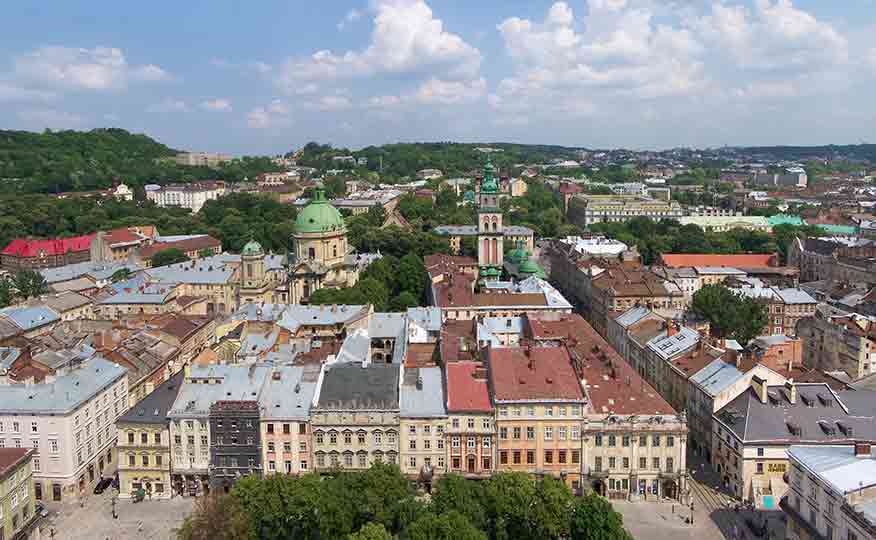
Lviv Old Town - contemporary photo
(Source: Wikipedia, by Lestat [Jan Mehlich] - Own work, CC BY-SA 3.0)
"I wanted to enroll in the aeronautics department of the Lviv Polytechnic in 1939, but we just got occupied by the Soviet Union and they did not allow local people to fly," Szybalski says years later, from his office at the McArdle laboratory in Madison. “After 22 months, the German invasion simplified things. They just closed all schools."
He was interested in chemistry when he was still a student of the famous 8th Gymnasium in Lviv, from which he graduated in 1939. When the occupation precluded his chances of pursuing aviation as a career, he became a student of the Chemistry Department of the Lviv Polytechnic. He always wanted to be a science leader. "I always like to be at the forefront of something that is completely new", he later said. While still a student at the Lviv Polytechnic (1939-1944), he developed a new method of paper chromatography, which became widely used. He "brushed against" a potential Nobel Prize at the time, as he put it, because someone else received it two years later for the same thing, while he himself had no way of publishing his results in the occupied Poland.
After the war, he got his diploma in chemical engineering nostrificated (acknowledged) at the Silesian University of Technology and from May 1945 he lived in Gdańsk, where he worked simultaneously at the Gdańsk University of Technology, in the Voivodship Office, in the Standardization Inspectorate and in the Chamber of Industry and Commerce. He defended his doctorate in chemical sciences at the Gdańsk University of Technology in 1949 under the supervision of prof. Ernest Sym.
After short training visits to the Technical University in Copenhagen, at the invitation of the famous Bohr brothers, in 1949 he decided to finally leave Poland, where the Stalinist regime was beginning to take reign, while the Communist secret service - as it turned out later - already had him in their sights. The Cold War was starting in earnest, and it was clear that these journeys to the free world would have to come to an end. Soviet general Constantin Rokossovsky became the marshal of Poland, and genetics, considered reactionary and bourgeois pseudo-science due to Trophim Lysenko and with Stalin's support, was officially rejected.
During his stay in Denmark, whether in the laboratory of Professor Øjvind Winge, or under the supervision of Niels Bohr himself, he made important contributions to the research by explaining the kinetics of some chemical reactions and developing a simple method to prevent corrosion of iron pipes caused by aerobic bacteria. However, not feeling too safe in Denmark, and fearing the return to Poland, which seemed on the brink of being incorporated into the USSR at any moment, wishing to be far enough away from the Russian Communist empire, he left for America. "I used to be a prisoner before and so decided that I had to keep going," he explained in later years.
The secretary at the US embassy told him that he would have to wait 10 years for a visa, so Szybalski, without thinking twice, called the consul directly (his knowledge of English proved handy), made an appointment and obtained detailed information. He got surprised that he was supposedly born in... Russia. "I said that I had never been to the Soviet Union, it was the Soviet Union that came to me, but from the United States' point of view, Poland was given to Mr. Stalin because he was so nice!." After a brief search of the consulate's library, he discovered that visas were available for teachers. “I brought my papers and got a visa in three or four days; it was some sort of a record."
The American Period
So he arrived in the United States in 1950 with a "staggering" fortune of $35 in his pocket, but also with a hard-earned, excellent scientific reputation. He immediately found a job - incredibly well-paid at the time - as a scientist at Wyeth Inc., an antibiotic-making pharmaceutical company in West Chester, Pennsylvania. There, he obtained his first patent, developing a modified penicillin that, being less soluble, instead of having to be administered four times a day, could only be injected once daily. This gave him, he recalls, income for the next 17 years. Since deep down he turned out to be more of an avid scientist-researcher than an engineer in the pharmaceutical industry, he was now able to devote himself to scientific research for the sheer pleasure of it.
Soon, on the recommendation of prominent Danish researchers, including the physicist Niels Bohr, he found a job in a genetic laboratory in Cold Spring Harbor on Long Island, New York, which was already the capital of the emerging science of molecular biology. There he plunged - for a half of his previous salary - into the study of antibiotics, which, although only recently became widely used, bacteria were already starting to develop resistance to.
In 1952 Szybalski invented a method for measuring and overcoming antibiotic resistance. His genetic research on drug resistance prompted him to promote the treatment of tuberculosis with multiple antibiotics simultaneously, which largely blocks the development of the resistance. Although initially opposed, multi-drug therapy is now the standard treatment for tuberculosis, AIDS, leukemia, and other diseases. In addition, his research on the genetics of an antibiotic-producing soil microorganism called Streptomyces provided information useful in the commercial production of streptomycin, an effective therapeutic agent for the treatment of tuberculosis.
He wasn't done inventing yet.
In 1960, after several years at Rutgers University, Szybalski joined the McArdle Laboratory for Cancer Research at the University of Wisconsin - Madison and began pioneering research into the virus capable of infecting bacteria. The virus, called the lambda phage, became the basis of Szybalski's long-term interest in the method of gene transfer, modification and regulation. From 1960 to 2003, he was a full-fledged professor of oncology at the University of Wisconsin-Madison, actively engaged in research there together with his wife. He was the recipient of the Hilldale Awards, the University of Wisconsin-Madison's highest honor.

In 1960, Szybalski started at UW–Madison’s McArdle Laboratory, pictured above in 1965, and quickly established himself as a renowned geneticist (Photo: UW Archives)
In 1962, he invented the so-called gene therapy, proposing a method to repair faulty DNA, and for the first time succeeded with introducing external DNA into human cells, and he was also the first to create functional synthetic DNA in vitro in 1963.
“I knew what questions had been asked for years, even centuries: what is life? What is the essence of life? And that was DNA!”, said Professor Szybalski.
DNA - the instructions that sustain life but also change over time, the essense of life - is the theme of his career. Interestingly, he noticed already in the early 1950s that DNA is the carrier of genetic information at a time when the vast majority of scientists believed that this function was performed by proteins.
In 1974, he introduced the term "synthetic biology" to describe an emerging field of design and construction of synthetic biologically active molecules. His numerous contributions to genomics include novel activities in restriction enzyme engineering, single-copy amplifiable gene libraries, and a host of other techniques used to study the human genome.
Szybalski, together with his wife Elizabeth, invented an ingenious method of selecting cells using the HAT medium, named after its components: hypoxanthine, aminopterin and thymidine. It is a technique of separating cells that have been genetically modified from the remaining, unmodified cells. The HAT technique was a groundbreaking concept that opened the way to the treatment of human genetic diseases through genetic therapy - this term also comes from Szybalski.
In 1984, HAT selection became the key to the Nobel Prize-winning technique of obtaining the so-called monoclonal antibodies, now widely used in diagnosis and therapy, which would not be possible without HAT. Monoclonal antibodies produced by groups of identical immune cells can recognize specific proteins and cell types and have been used in countless areas of research and medicine to study and treat conditions such as cancer, rheumatoid arthritis, and to identify pathogens. Thus, the genetically modified cell selection technique laid the groundwork for obtaining monoclonal antibodies and thus the Nobel Prize - awarded to someone else, without any mention of the pioneers of this technology, the Szybalski couple.
He was the first to prove that both strands of DNA are transcribed into mRNA. In the 1980s, he developed a technique for obtaining universal restriction enzymes that cut DNA at a selected site. From the beginning of the 1990s, he participated in the development of methods for sequencing long DNA fragments, including the human genome.
The list of his wonderful scientific achievements is long.
"Insight, coupled with persistence, was a hallmark of Szybalski," said former PhD student Frederick Blattner, Emeritus Professor of Genetics at the University of Wisconsin - Madison. “He is a poet of the scientific method, capable of intellectual speculation, creating tests and hypotheses; he had an amazing way of solving complex problems."
The Polish Pope himself, John Paul II, sought his opinion about the emerging field of genetic engineering during a private audience at the Castel Gandolfo residence in September 1981. Szybalski, a great enthusiast of new methods in genetics, did not waste an opportunity to lecture the Pontiff about the various benefits of genetic manipulation. "Please do not preach to me," the Pope supposedly cut him short.
During his professorship in Madison, Szybalski collaborated with many Polish scholars and assisted them in various ways, by providing them with education in the USA, and by collaborating with scientists in the country. His contacts with Polish science were very lively, and he appreciated them very much.
The second theme of Szybalski's life was more - perhaps not down-to-earth, but rather specific: engineering. Growing up in Poland, Szybalski was fascinated by airplanes. “I built model airplanes, flew them in competitions. I got into the sport of gliding and got a BA in Engineering”, he said. As we mentioned, aviation was his first real passion, but the wartime conditions did not allow him to choose this particular field of education. Maybe it is for the better, from the point of view of the benefit to humanity, because as a geneticist, he accomplished a lot indeed, while the knowledge of engineering served him well in his work in the laboratory.
The Retirement
He formally retired in 2003, but remained active in his scientific field for a long time afterwards.
In total, he was the author or co-author of over 300 publications in the field of microbiology, genetics, and molecular biology. More than a dozen of his publications have appeared in the most prestigious scientific journals, Nature and Science. Few of even the most eminent scientists in the world can pride themselves in having such a large number of their works published by these journals.
He earned two patents. His last publication appeared in the scientific journal GENE - of which he was the founder and editor-in-chief for 20 years - in 2013.
On his initiative, in 2007, the Professor Wacław Szybalski Foundation was established, the aim of which is to act to strengthen the international prestige of Polish science and the city of Lviv. This foundation supports Polish science, for example, by awarding prizes to young, promising scientists.
In 2011, he was awarded the Grand Cross of the Order of Polonia Restituta (Poland Reborn) by the President of the Republic of Poland, Bronisław Komorowski, for outstanding achievements in scientific and research work in the field of biotechnology and genetics, and for teaching.
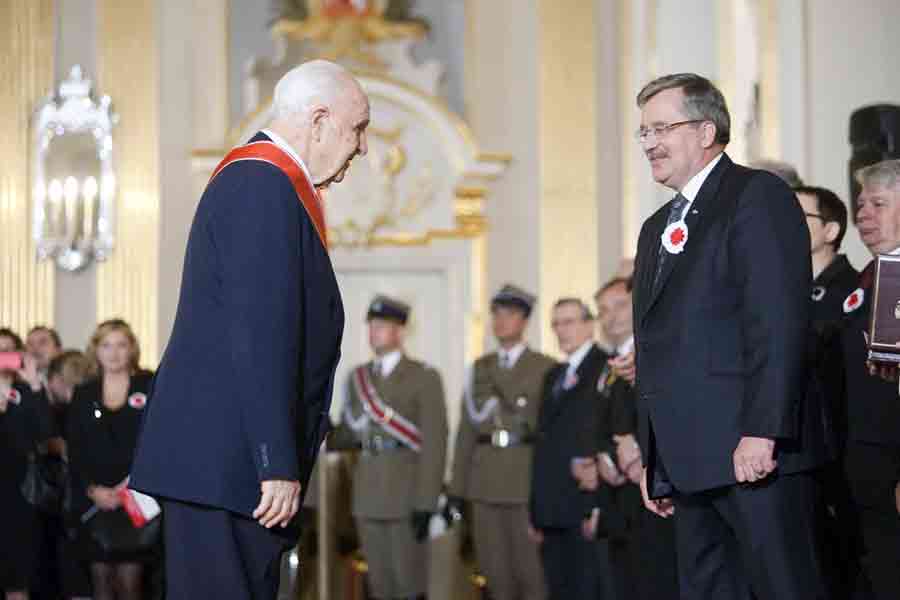
Waclaw Szybalski (left) receives the Grand Cross of the Order of Polonia Restituta (Poland Reborn) from President Bronisław Komorowski of Poland (right) in 2011 for his “extraordinary and distinguished service.” (Photo: Foundation Professor Waclaw Szybalski)
In 2012, the Jagiellonian University in Krakow honored prof. Wacław Szybalski with an honorary doctorate. The scholar was also an honorary doctor of the University of Gdańsk, Gdańsk University of Technology, Gdańsk Medical University, a foreign member of the Polish Academy of Sciences, and the Polish Academy of Learning.
Mentoring
Great scientists should be great mentors, and Szybalski, who had learned from leading specialists in his own time, always took this responsibility very seriously.
We have a long list of at least thirty Polish outstanding scientists who owe their scientific career to prof. Szybalski. They hail from his school in Cold Spring Harbor, New Brunswick, and Madison [...]. They recognize him as their unsurpassed master. I am one of them [...]. And many Nobel Prize winners who have used his ideas and advice might say the same.
With these words, prof. Edward Borowski, the promoter of awarding him the title of doctor honoris causa of the Gdańsk University of Technology, honored his mentor.
"It is not enough to merely discover something - you have to tell people."
are the words of Szybalski, a great teacher and promoter of science.
When David Baltimore and Howard Temin were awarded the Nobel Prize in 1975 for the discovery of an enzyme called reverse transcriptase, which soon proved to be an essential component of HIV and other retroviruses, it was likely the result of Szybalski's personal intervention with the editors of Nature, when he worked to ensure that Temin - his collaborator - would get the right to publish the results side-by-side with Baltimore, who independently made the same discovery and, perhaps, thanks to these efforts, both were equally recognized. Szybalski's conversation with the chairman of the Nobel Prize Committee, Peter Richards, during a 21-mile ski run - with a fractured shoulder bone - during which he strongly supported Temin's candidacy, did not hurt either.
In addition to defending his students and collaborators, Szybalski also always firmly and publicly defended the right to freedom of research in science, standing for the "principle of freedom of teaching and research." He was a great enthusiast of the advances in genetics and genetic engineering until the end.
I believe that any political restriction of the freedom of science should be combated, bearing in mind Hitler, Stalin, Lysenko and others! I am asking you, young people, to fight for the freedom of science!
A Hero of a Movie and a Book
Professor Szybalski saw a movie about himself made during his lifetime. "The Essence of Life" is a documentary by Anna Ferens, an award-winning Polish filmmaker, screenwriter and journalist, which was created in 2014. In an instructive and direct way, this film intertwines serious notes with a touch of humor, telling a fascinating story of great scientific curiosity, determination against adversities, and the personal drive needed to overcome countless and seemingly overwhelming obstacles to academic success. Various eminent personalities from the world of science, who knew and collaborated with the Professor, appear in it. Ms. Ferens told Kuryer that she was currently working on an updated version, which we should be able to watch in the United States too, hopefully soon.
The Essence of Life by Anna Ferens - Trailer
Mr. Jarosław Abramow-Newerly, a Polish writer, composer, songwriter and journalist - in turn - wrote a book called Professor Wacław Szybalski about Lviv, Genes, the Essence of life and the Nobel Prizes, which include the recollections of professor Szybalski, numerous interviews with him and members of his family and friends. The book was published in 2018 by the Publishing House of the University of Gdańsk and shows the entire history of his generation, the city of Lviv, Poland, and the world science in the creation of which the Professor actively participated, and at its highest levels.
Personal life
"There is no better friend and colleague than Wacio," said Hilary Koprowski, a prominent Polish virologist. [Wacio in Polish is a diminutive of the name Wacław]
The dossier that the secret communist services kept on him described him as follows:
An avid researcher, a typical scientist, very absent-minded, a bit weird, negligent in terms of clothes, but very resourceful in life. Not a materialist in the sense of making money. Pretty handsome, though bald from his youth, a womanizer.
To this last label, he modestly used to respond admitting that he was indeed outgoing. Undoubtedly, he was successful with the fair sex, as the secret police then dutifully noted:
Ms. Fabicka (a married woman) who lived in Sopot, had a close relationship with Wacław Szybalski and even has a 7-year-old daughter with him.
He never denied or tried to hide this relationship.
In marriage, Szybalski chose the perfect combination of affection and love for his work. His ideal wife was Maria Skłodowska-Curie, whom he met back in 1932, at the impressionable age of 11, but as soon as he met Mary Elizabeth Hunter in 1951, the rest was, as they say, history.
“My idea for marriage was to find the best possible partner. I met Elizabeth Hunter in Cold Spring Harbor. She's smarter than me. We had something in common and we could continue our research together" he later recalled with both modesty, and a sense of humor.
He approached the choice of the future spouse with a truly scientific mind:
I knew she had to be a scientist. I wanted her to be very smart, to look good, to be slim, good skier, from a good family, and not to talk too much, to be quiet and calm.
Liz was everything he was looking for. They had two children together - who, however, did not choose the scientific path of study, after their parents. After decades of research collaboration - their first joint article was published before they even got married in 1955 - Elizabeth Hunter Szybalska's health began to deteriorate. She died in 2015.
As Ms. Ferens wrote in a post on Facebook, until quite recently professor Szybalski "was skiing, swam in the lake, went to concerts, danced at balls, kept up to date with international affairs and events in Poland; he read a lot, used Skype and he drove a car."
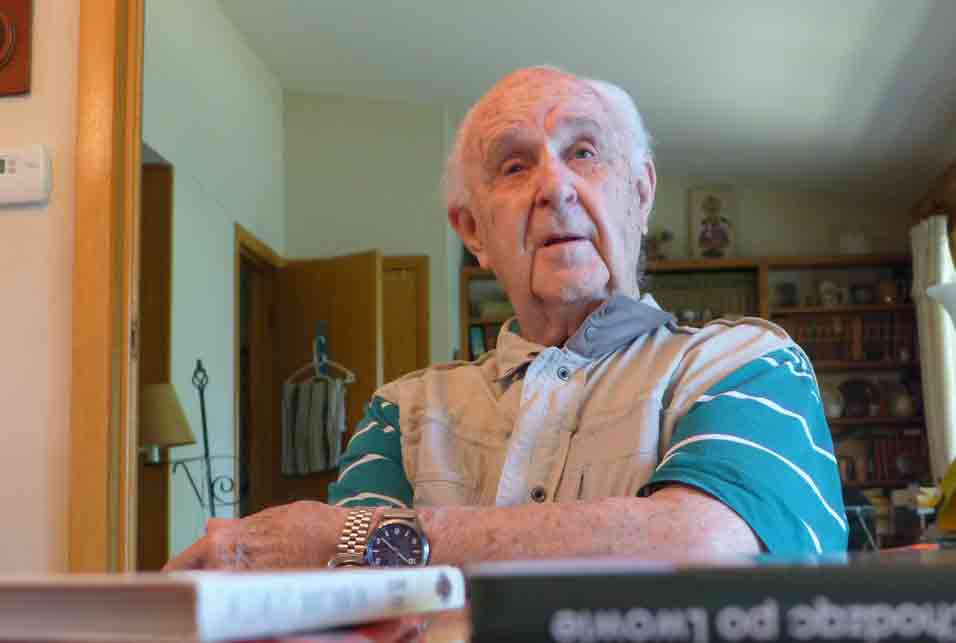
Wacław Szybalski, at home in Madison (Photo: David Tenenbaum, reproduced with permission)
Once asked what the secret of his great shape was, he replied humorously that the most important thing is to choose the right parents, because everything depends on genes. Well, what other answer would you expect from an eminent geneticist?
The most important thing in life is to create something on the one hand, and to have friends and work so as not to avoid living. You have to be brave to achieve something and do something. Something good for Poland and for Lviv.
He has always been faithful to his hometown. It pained him a lot that Poland lost it in the new, post-war world order.
When he renewed his driving license in March 2014, he jokingly observed that he would have to renew it again on his 101st birthday. Sadly, he wasn't going to last to the hundredth.
He was always ahead of his time, for many years paving the way for the future of molecular genetics and his scientific work laid the foundations for several Nobel prizes won by others. Until the end of his life, he remained a strong patriot of both Poland and the United States. His departure is a great loss of a truly great Human being and a Pole.
The article uses, among others, materials by David Tenenbaum of the Univeristy of Wisconsin-Madison and information from a private viewing of Anna Ferens' documentary.



